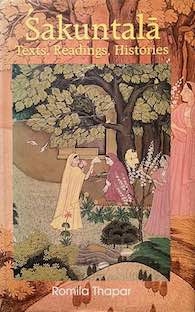
Tribal customs attract the attention of experts in the wake of multiple threats posed to public Health and food security. Indigenous knowledge systems are being valued assets in the context Biodiversity just as Ethnobotany. This explains why distinguished scientist MS Swaminathan wants to ensure that resources will be shared in a more sustainable and equitable manner. This view is shared by M. Venkaiah Naidu, Vice President of India, who believes that tribal groups can teach us lessons in sustainable development.
In the larger context of Ecology and environment this appeal relates to the question how the effects of climate change affects rural and urban communities alike: “Cultivating and conserving diversity is no luxury in our times: it is a survival imperative.” (Vandana Shiva). In her paper “Perceiving the Forest“, historian Romila Thapar looks at the way people observed and wrote about the forest at different times, and to see how over time it changes:
Environmental history is being researched in a much bigger way than before. This is apparent in discussions on the decline of Harappan cities. What caused the decline? Today we know that invasions and conquest are very often really quite marginal. More likely factors could be deforestation, possible changes in climate at that time, changes in sea level and the silting up of settlements, flooding, changing river courses like that of the Satlej or the disappearance of the Hakra, and the proximity of settlements to particular ecologies.
Based on first-hand knowledge, nationally and internationally acclaimed writer Mahasweta Devi addressed social problems such as the violence and injustice suffered by the Lodha and Shabar communities of West Bengal. She made her readers realize that “Indian forests, rivers and mountains owe their survival to Adivasis … the most civilised people” who deserve to be treated accordingly. In response to a widely reported crime she challenged widely held prejudices by maintaining that “tribal girls have always been exploited by men and I have always fought for them” (Indian Express, 5 February 2015).
Kamaljit S. Bawa is convinced that the country needs Partnerships for sustaining life:
India is blessed with unique and an enormous amount of biodiversity that sustains many of our economic endeavours, and provides aesthetic, cultural and spiritual values. This biodiversity is declining, and this decline is threatening our survival.
In her award winning documentary “Have you seen the arana?“, filmmaker Sunanda Bhat follows a group of tribal women concerned over the disappearance of medicinal plants from the forest. A farmer tells about his commitment to growing traditional varieties of rice organically. We gain fresh insights into shifting relations between people, knowledge systems and environment. Interwoven into contemporary narratives is an ancient tribal creation myth that traces the passage of their ancestors across this land, recalling past ways of reading and mapping the terrain.
Since the Hyderabad biodiversity pledge was adopted in 2012, concerned citizens want their elected officials to act more responsibly as far as India’s natural resources are concerned:
“Biodiversity is under threat from a range of sources […] The question now is whether India is going to honestly identify what this underlying driver is and make a serious effort to balance the development versus nature battle.” – Tarsh Thekaekara (thesholatrust.org)
Most importantly, laws such as the much-discussed Forest Rights Act (FRA) must be fully understood by the communities concerned.
- Continue the guided tour – Part 6 >>
- Start the guided tour (Part 1)

